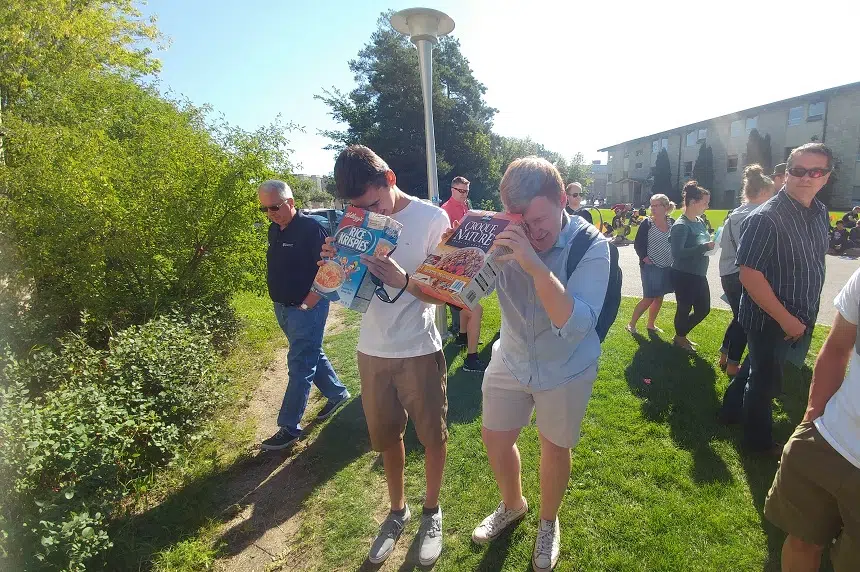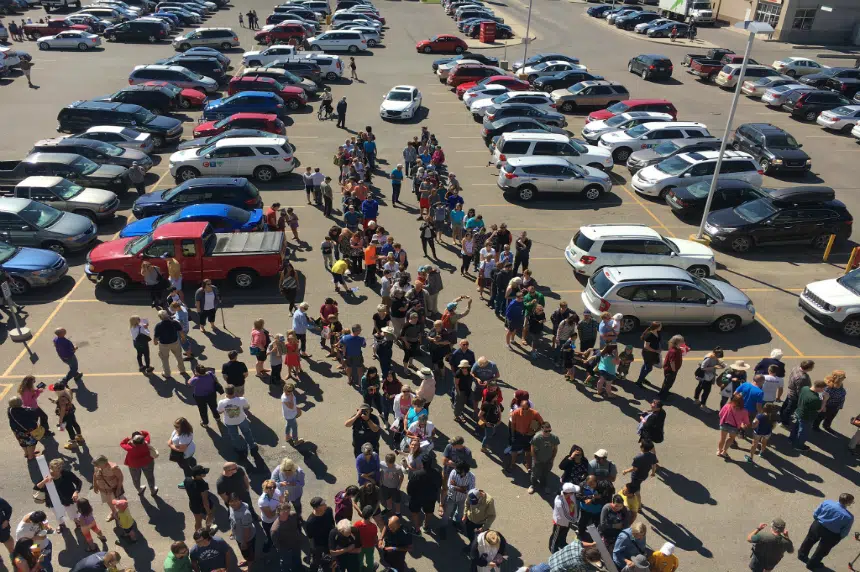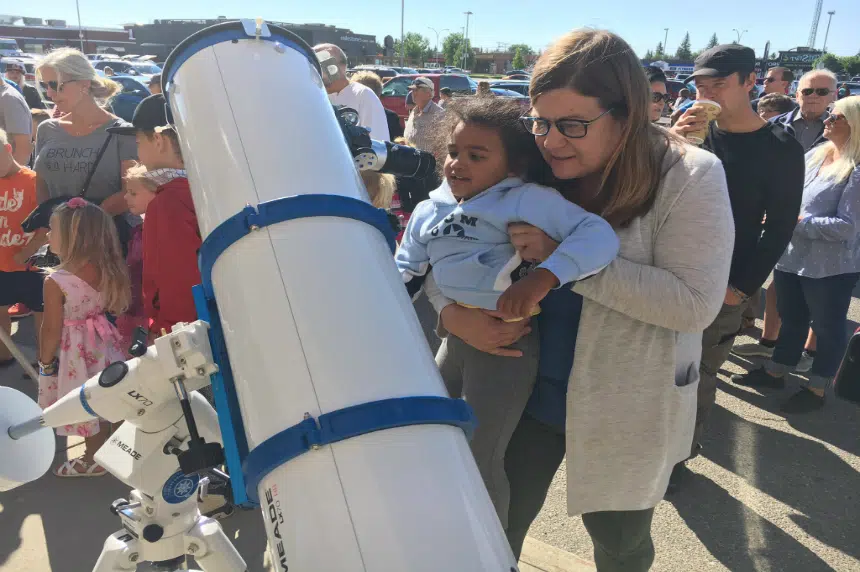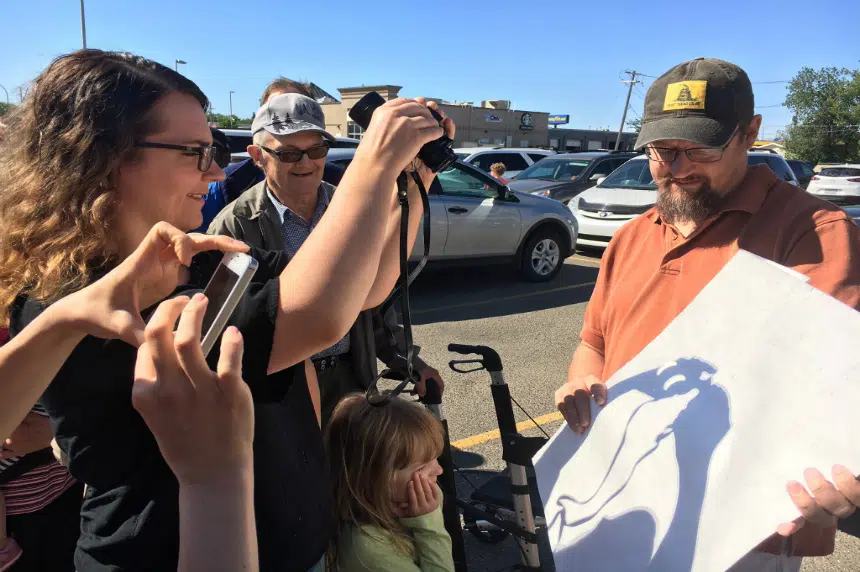It was a rare and spectacular sight to behold – if you knew how to look for it.
A partial solar eclipse was visible Monday morning in Saskatchewan, with its peak occurring around 11:43 a.m.
Down in the United States, people pulled up lawn chairs to experience the first total solar eclipse – when the Moon passes between earth and the sun – to sweep the country from coast to coast in nearly a century.
In Saskatoon, hundreds of people packed the parking lot of London Drugs on 8th Street to get a view with one of eight telescopes – outfitted with special filters – on display for use.
“I’m pretty surprised by how many people actually showed up today,” said Brock Roe with Saskatoon’s chapter of The Royal Astronomical Society, that helped put on the event with London Drugs.
“I was surprised how well you could view the partial eclipse using the cheap solar glasses that you could buy.”
Roe said people were confused when they first viewed the partial eclipse with his telescope.
“It was just a circle of light and people thought it was out of focus, but I told them, ‘That’s the sun getting covered by the moon,’ and they were shocked,” he said.
It wasn’t the first time Lillia Wilcox has seen a solar eclipse. In February 1979, she was watching the sky in the southeast corner of Saskatchewan.
“I don’t think this one chalks up because the one in 1979 was a total solar eclipse,” she said. “There was a 360-degree sunset with stars and because it was in February it was very cold.”
Others, like Rocky Zhao and Carina Zhang, worked off YouTube videos to make pinhole viewers out of cereal boxes.
“When all the glasses in Saskatoon sell out, you have to get creative,” Zhao said. “You can actually see the projection of the eclipse in the box.”
Better look at how the pinhole projector works. #yxe #Eclipse pic.twitter.com/GfYifFdNnc
— Chris Vandenbreekel 🇨🇦 🍁 🇨🇦 (@Vandecision) August 21, 2017
More than 250 people caught the partial eclipse at the University of Saskatchewan observatory. Many brought their children along so they could experience it for the first time.
“I was trying to explain to them that I was a little girl the last time this happened in our area,” said Kirsten Waldschmidt, who brought her three kids.”You have to grab the chance.”
People waited for more than thirty minutes for a chance to look through the observatory’s main telescope, or a secondary one set up on the lawn outside. Both had special sun lenses to allow for safe viewing.
Three-year-old Rohan McMillan was very surprised by what he saw.
“A bite through the sun! I think it was the Earth’s moon!” he told 650 CKOM.
When asked if the moon had actually taken a bite out of the sun, the toddler responded scientifically:
“No, the moon is just covering half of the sun!”
His mother, Mira Kachroo, said it was amazing to share the experience with her son at such a young age.
“It’s really amazing to know this is a once-in-a-lifetime event for both of us,” she said. “He loves space and he loves learning about the solar system, so this is a time when he can actually experience some of the things that he’s learning about.”
Observatory staff also helped people create pinhole viewers with cardboard and tinfoil, while others shared special NASA-approved glasses and welder’s helmets to look directly at the eclipse.
The next total solar eclipse is set to happen on April 8, 2024, when the shadow of the moon will once again completely block out the sun across the United States from Texas to Maine.
Portions of Mexico and eastern Canada will also experience a total solar eclipse.
– With files from 650 CKOM’s JT Marshall and Chris Vandenbreekel.

















